

ASA’s upcoming SPHEREx space telescope mission will map the entire sky like no spacecraft before it. To do that, SPHEREx needs specialized hardware. Three concentric cones called photon shields surround the telescope and block light and heat from the Sun and Earth. Without those shields, the telescope’s detectors would be blinded. SPHEREx also needs to be cold because it detects infrared light. Invisible to human eyes, infrared is emitted by warm objects on Earth and out in the universe. It’s also emitted by the telescope. Keeping it cold reduces the infrared glow, which lets SPHEREx see faint objects that are really far away. SPHEREx stands for the Spectro-Photometer for the History of the Universe, Epoch of Reionization and Ices Explorer. Managed by NASA’s Jet Propulsion Laboratory, a division of Caltech in Pasadena, California, SPHEREx is set to launch no later than April 2025. For more information about the SPHEREx mission, visit:
Go behind the scenes with the team working on NASA’s SPHEREx space telescope as they talk through their rigorous testing process. Short for Spectro-Photometer for the History of the Universe, Epoch of Reionization and Ices Explorer, SPHEREx aims to capture millions of stars and galaxies in 102 colors, creating a unique 3D map to uncover clues about the universe’s origins. This video features Farah Alibay, a SPHEREx systems engineer at NASA’s Jet Propulsion Laboratory, and Brian Pramann, SPHEREx program manager at BAE Systems. Learn about the special facilities required for SPHEREx’s critical environmental tests, including thermal, acoustic, vibration, and electromagnetic interference and compatibility testing. NASA is targeting Feb. 27, 2025, for the launch of SPHEREx, which will lift off aboard a SpaceX Falcon 9 rocket from Vandenberg Space Force Base in California. For more information on SPHEREx, visit Credit: NASA/JPL-Caltech/BAE Systems
Johns Hopkins University (JHU) continues to pad its space community résumé with their interactive map, “The map of the observable Universe”, that takes viewers on a 13.7-billion-year-old tour of the cosmos from the present to the moments after the Big Bang. While JHU is responsible for creating the site, additional contributions were made by NASA, the European Space Agency, the National Science Foundation, and the Sloan Foundation.
Watch NASA's prelaunch update for SPHEREx and PUNCH missions. The SPHEREx space telescope will survey the sky in optical and infrared light, gathering data on more than 450 million galaxies, and 100 million stars in our own galaxy. PUNCH will use four suitcase-sized satellites in low Earth orbit to observe the Sun, and tell us more about the space weather that can impact communications on Earth. The launch window opens at 10:09 p.m. EST (7:09 p.m. PST) on Saturday, March 8, for the SpaceX Falcon 9 rocket that will lift off from Space Launch Complex 4 East at Vandenberg Space Force Base in California. Join experts from NASA, SpaceX, and the U.S. Air Force to discuss the prelaunch status. Participants: Mark Clampin, acting deputy associate administrator, Science Mission Directorate, NASA Headquarters James Fanson, SPHEREx project manager, NASA’s Jet Propulsion Laboratory David Cheney, PUNCH program executive, NASA Denton Gibson, launch manager, NASA’s Launch Services Program Julianna Scheiman, director, NASA Science Missions, SpaceX 1st Lt. Ina Park, launch weather officer, 30th Operations Support Squadron, U.S. Air Force For more information on SPHEREx, visit
SPHEREx Launch - NASA's Advanced Space Telescope Better Than JWST To Search For Alien Life! Are you ready to join NASA's next giant leap into the cosmos? 🌌 Meet SPHEREx, NASA's groundbreaking mission to explore the origins of the universe, survey millions of galaxies, and unlock cosmic secrets like never before! Unlike Hubble and the James Webb Space Telescope, SPHEREx will map the entire sky in stunning infrared detail, creating a 3D map of the universe to reveal answers about cosmic history, galaxy formation, and even the potential for life elsewhere in the universe. 🚀 With cutting-edge technology, this revolutionary space observatory will scan the sky in 102 infrared colors, capturing light from hundreds of millions of galaxies up to 10 billion light-years away. By studying the building blocks of life—water, carbon dioxide, and organic molecules—SPHEREx could transform our understanding of planetary formation and the conditions for life beyond Earth. 🌍✨ #spherex #nasaspace #jwst #exploration #lab360 Explore Best Videos From Lab 360: Only on @LAB360 (YOUTUBE) Top UFOs, Aliens, SuperNova Videos of LAB360 What's Hot 🔥 on Lab 360 👀 WATCH BEFORE THEY DELETE ❌THIS! 🛸 UFOs & 👽 Aliens - Lab 360 🛰 James Webb Space Telescope Updates and News Follow Us On Instagram Like Us On Facebook Join Lab360 to get access to some amazing perks: / @lab360 Lab 360 Channel Subscribe to the channel: / @lab360 ------------------------------------------------------------------------------------------------------------------- Welcome to Lab 360! The ultimate destination for the latest space news and space documentaries from the world of astronomy and astrophysics. Stay updated with all the current discoveries from NASA, James Webb Space Telescope, along with easily explained videos on black holes, asteroids, galaxies, planets, and more. You will also find a collection of easy-to-perform experiments that will feed the science enthusiast in you! Are you ready? Explore Best Videos From Lab 360: Only on @LAB360 (YOUTUBE)
SPHEREx The Spectro-Photometer for the History of the Universe, Epoch of Reionization and Ices Explorer mission will provide the first all-sky spectral survey. Over a two-year planned mission, the SPHEREx Observatory will collect data on more than 300 million galaxies along with more than 100 million stars in the Milky Way in order to explore the origins of the universe.

The universe is cold and dark. And yet, within the dark, there is a faint glow of warmth. Across the sky, there are objects that emit infrared light, similar to the light that warms your hands near a campfire. By observing this light, astronomers can see the cosmos in a way that looks very different from that seen by our eyes.

A JWST engineering image of the star 2MASS J17554042+6551277, uses a red filter to optimize visual contrast. Credits: NASA/STScI
A SpaceX Falcon 9 rocket launched NASA's SPHEREx and PUNCH science mission from Launch Complex 4E at Vandenberg Space Force Base in California on March 11, 2025 at 11:10 p.m. EDT (0310 March 12 GMT). Credit: SpaceX
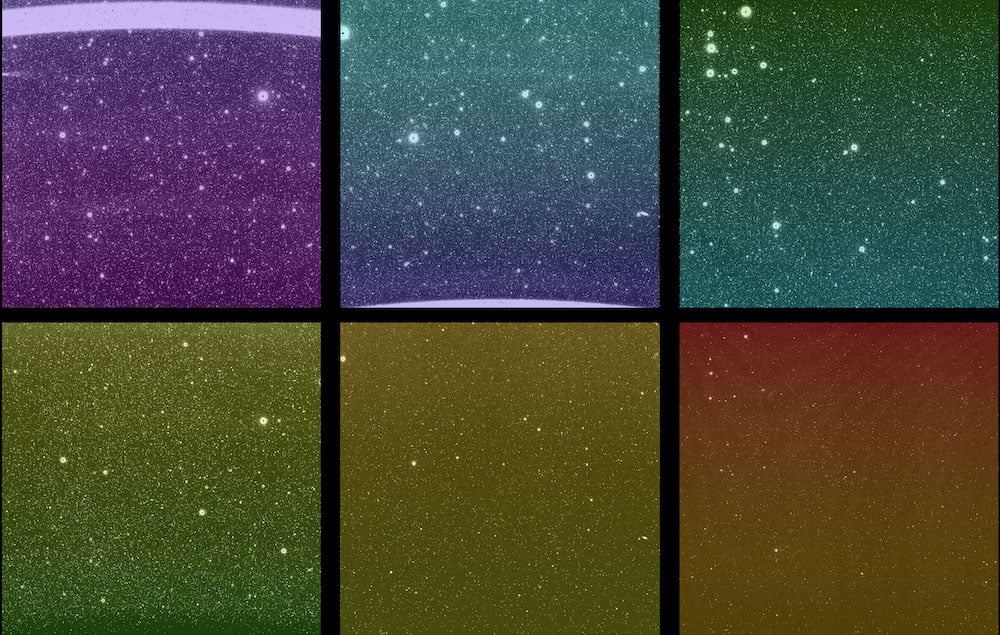
NASA’s SPHEREx, which will map millions of galaxies across the entire sky, captured one of its first exposures March 27, 2025 . The observatory’s six detectors each captured one of these uncalibrated images, to which visible-light colors have been added to represent infrared wavelengths. SPHEREx’s complete field of view spans the top three images; the same area of the sky is also captured in the bottom three images (Credit : NASA/JPL-Caltech)
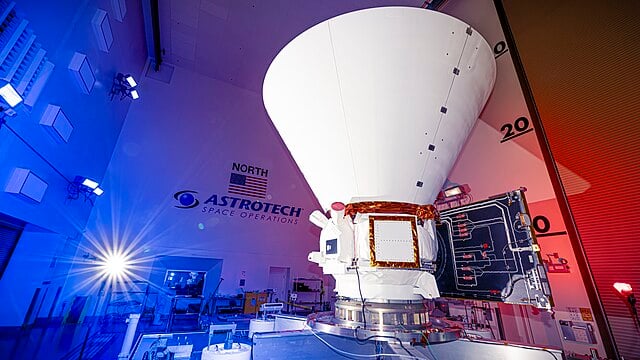
SPHEREx on a work stand ahead of prelaunch operations at the Astrotech Processing Facility at Vandenberg Space Force Base in California in January 2025 (Credit : NASA Kennedy Space Center / BAE Systems/Benjamin Fry)
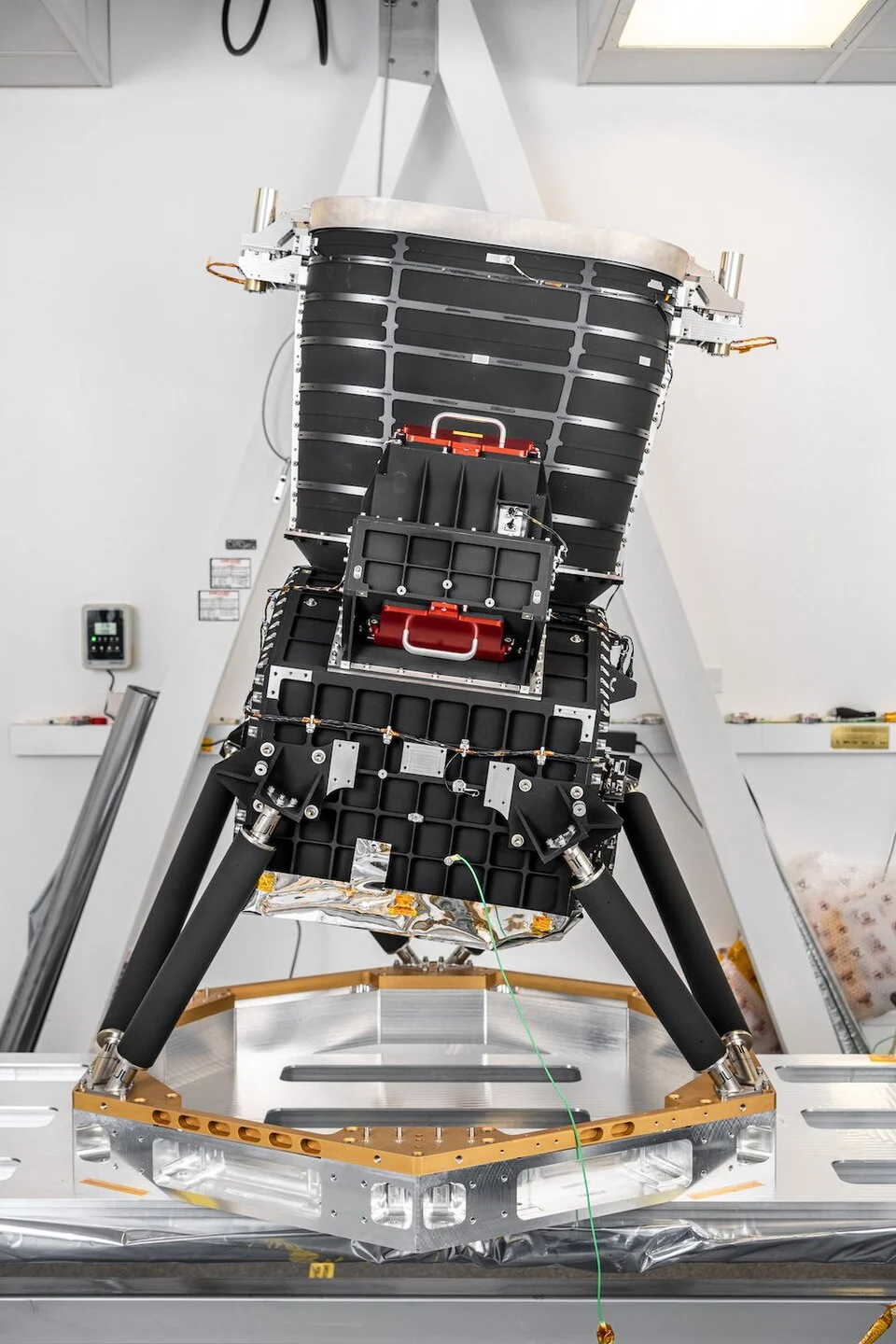
SPHEREx and its detectors ( Credit : NASA/JPL-Caltech)
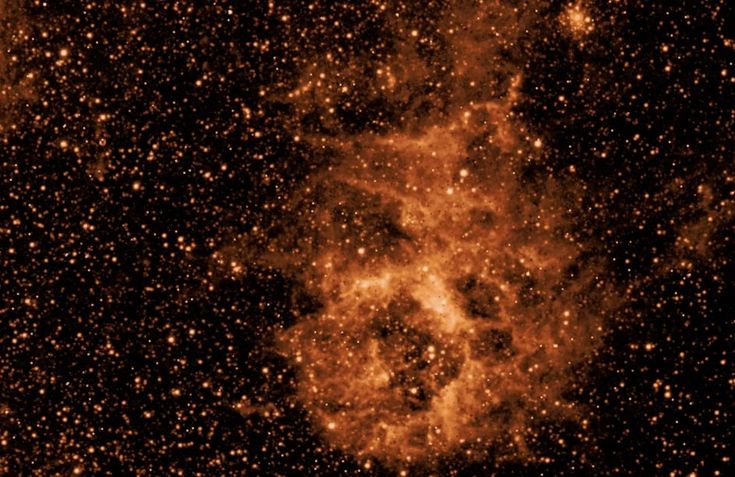
NGC 1763 at the 3.29 micron wavelength. Credit: NASA/JPL-Caltech

The launch of SPHEREx and PUNCH. Credit: NASA/Jim Ross.
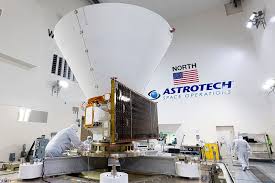
SPHEREx in the clean room ahead of launch. Credit: BAE Systems/Benjamin Fry.
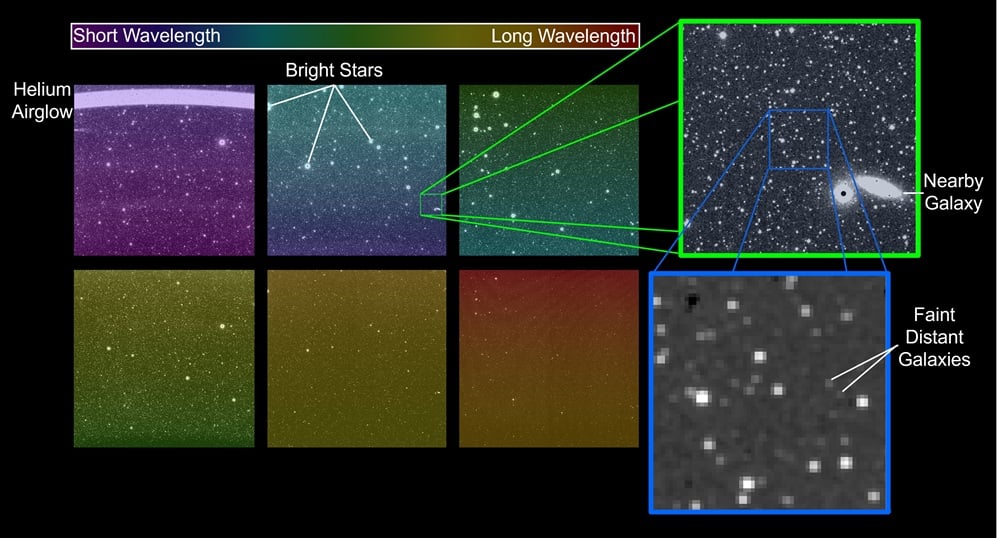
An early 'six series' calibration image for SPHEREx from first light in early April, showing the multi-spectral capabilities of the observatory in action. Credit: NASA/JPL-Caltech.
This video shows the SPHEREx observatory’s field of view as it scans across one section of the sky inside the Large Magellanic Cloud, with rainbow colors representing the infrared wavelengths the telescope’s detectors see. The view from one detector array moves from purple to green, followed by the second array’s view, which changes from yellow to red. The images are looped four times. Credit: NASA/JPL-Caltech

The same cluster NGC 1763 (see lead image) at 0.98 microns. Credit: NASA/JPL-Caltech